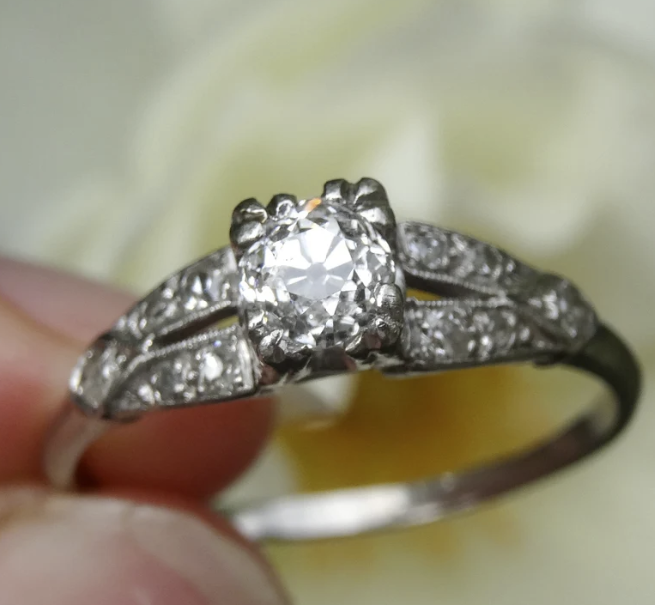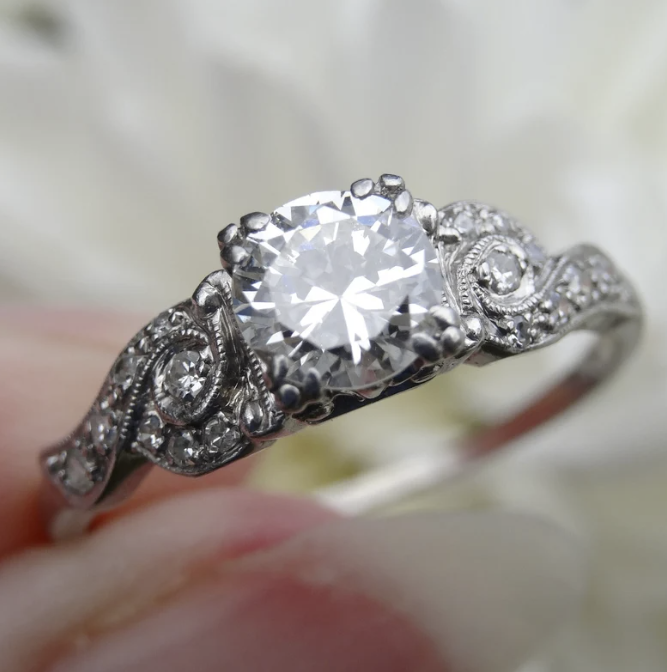A Simple Guide to Diamond Cuts Through the Ages
By Lisa Millwood – Expert Gemmologist & Jewellery Valuer in Tasmania
If you've ever inherited a diamond ring, looked at vintage jewellery, or considered buying an antique piece, you may have heard terms like “mine cut” or “old European cut.” These aren’t just fancy words—each cut tells a story from a different time in history.
In this guide, I’ll walk you through four of the most well-known vintage and modern round diamond cuts, how to spot them, when they were made, and why some are rarer and more valuable than others. I’ve also included photos so you can see the differences for yourself.
💎 1. Mine Cut (also called Old Mine Cut)
When was it made? 1700s to late 1800s
What does it look like?
Squarish or cushion-shaped
Tall and chunky
Big flat top and a visible “hole” (called a culet) in the bottom
Often slightly lopsided
Why it’s special:
This was one of the earliest styles of diamond cutting, made entirely by hand. They were cut to sparkle under candlelight, not modern lighting, so they have a romantic, soft glow. Each one is unique and full of character.
How rare is it?
Very rare. Because they were cut by hand, no two are exactly alike. Collectors love them, and their value is rising.
Photo example:
Victorian Pearl & Old Mine Cut Diamond trilogy ring. Click here to purchase and to see similar available
💎 2. Old European Cut
When was it made? Around 1890 to the 1930s
What does it look like?
Rounder than mine cuts
High crown (top) and small table (flat part)
Visible culet at the bottom
Still hand-cut, but more symmetrical than mine cuts
Why it’s special:
This cut was popular in Victorian and Art Deco jewellery. It gives off a warm, romantic sparkle and often looks best in soft lighting. These diamonds still show the hand of the cutter, but with more precision than the earlier mine cuts.
How rare is it?
Still quite rare, especially in larger sizes or original antique settings.
Photo example:
Art Deco Platinum Diamond Engagement ring featuring an Old European Cut Diamond. Click here to shop and to see similar available options.
💎 3. Early Modern Brilliant (also called Transitional Cut)
When was it made? Late 1920s to early 1940s
What does it look like?
Round shape
Smaller culet (some barely visible)
More modern-looking facets
Better sparkle under electric lighting
Why it’s special:
This cut is a “bridge” between antique diamonds and modern ones. You can still see hints of vintage style, but the light performance is closer to what you’d expect from today's diamonds.
How rare is it?
Not many were made, so they’re hard to find. They often show up in Art Deco and Retro rings from the 1930s and 1940s.
Photo example:
Art Deco diamond ring in platinum, .92ct transitional cut diamond. Click here to purchase and to view other similar items for sale.
💎 4. Round Brilliant Cut (Modern Brilliant)
When was it made? 1919 to today
What does it look like?
Perfectly round
Lots of tiny, precisely arranged facets
Very sparkly and bright under all lighting
No culet (or a very tiny one)
Why it’s special:
This is the most common diamond cut you see today—designed using mathematics to get the most sparkle possible. It’s bright, modern, and very popular for engagement rings.
How rare is it?
Not rare at all. These diamonds are everywhere and come in all price ranges. What makes one valuable is the quality (cut, colour, clarity, carat).
Photo example:
Round brilliant cut diamond
📊 Quick Comparison Chart
💡 What Does This Mean For You?
If you're buying, valuing, or inheriting a diamond, knowing the cut gives you insight into its history, craftsmanship, and sometimes its value. Antique cuts like Mine and Old European cuts aren’t just old—they’re unique, rare, and increasingly desirable for their charm and history.
🧭 Want Help Valuing or Identifying Your Diamond?
Whether you're curious about a family heirloom or considering a purchase, I can help you identify and assess your diamond’s age, rarity, and market value. As a qualified gemmologist and jewellery valuer based right here in Tasmania, I offer independent advice and professional valuations.
📞 Contact me here to book a consultation or valuation.
📚 Acknowledgements
This blog is inspired by the expert resources from Lang Antiques Jewellery University—a world-leading authority on antique diamond history and styles.
Additional recommended resources include:
"Understanding Jewellery" by David Bennett and Daniela Mascetti
Considered a “bible” for jewellery lovers.
Excellent photographs and historical context.
Covers major periods and famous designers.




